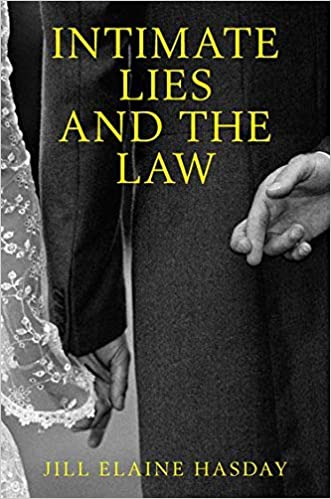
Okay, big surprise
People love you and tell you lies
Bricks can fall out of clear blue skies
— “Now You Know” from Merrily We Roll Along by Stephen Sondheim
In her recent book, author and law professor Jill Hasday examines the law available when people in intimate relationships deceive each other, and she finds it wanting. She has meticulously documented hundreds, if not thousands, of examples of intimate deception and researched the kinds of laws implemented to try to make the deceived party whole. Unfortunately, it didn’t always work out well for the deceived party.
What are intimate relationships? It isn’t just jilted romantic partners and ugly divorces. Intimate relationships occur between people in different kinds of relationships – married couples as well as parents and their children. Intimate deceptions range from minor lies (smokers claiming to be non-smokers on dating sites), to lies and deception made in fear (wife in abusive relationship hiding her pregnancy because she thinks her husband would hurt the baby), or made to avoid harm or embarrassment (mother who told her children that they were Native American, not Mexican because of perceived discrimination against Latin immigrants). However, she does take time to address deception that was done purposefully to hurt the other person in the intimate relationship.
Hasday points out that one of the difficult parts of putting intimate deception into a legal context is that this kind of deception is considered to be common and ordinary in relationships between people and thus out of scope for judicial satisfaction. One commentator describes deception as occurring since the first caveman invited the first cavewoman back to his cave to view his etchings. In this vein, the author describes a case where a married man’s ex-girlfriend falsely told him that she was pregnant with his child, and consequently his wife killed herself when she believed the lie to be true[1]. The man sued his ex for negligent misrepresentation as well as intentional and negligent infliction of emotional distress. Even in these horrible circumstances, the court found that angry behavior is not unusual between intimate partners, so even the egregious behavior in this case was not outrageous enough to warrant judicial redress. Professor Hasday concludes that one of the roadblocks for the victim is that when the court sees that the parties are intimately involved, the case will be treated differently than if the parties were not so involved.
However, what keeps this book from becoming a depressing morass describing people being horrible to each other is the last portion of her book, where Professor Hasday offers suggestions on how to hold intimate deceivers accountable for their harmful lies when it is appropriate to do so. As with many solutions to complicated problems, the change isn’t easy and involves all levels of legislation, regulation, and adjudication. However, the changes she suggests are reasonable and achievable. The author asserts, “The law of intimate deception is too important and needs too much reform to remain hidden in plain sight.”
Professor Hasday will discuss her book at an upcoming CLE sponsored by the Minnesota State Bar Association. This session, titled How the Law Handles Deception in Intimate Relationships, is scheduled for January 13, 2022 from noon to 1:00. 1.0 Standard CLE credit, event code TBD.
Jill Hasday, Intimate Lies and the Law. New York, NY: Oxford University Press, 2021.
[1] Starr v. Woolf, 2005 W.L. 1532369 (Cal. Ct. App. June 30, 2005).